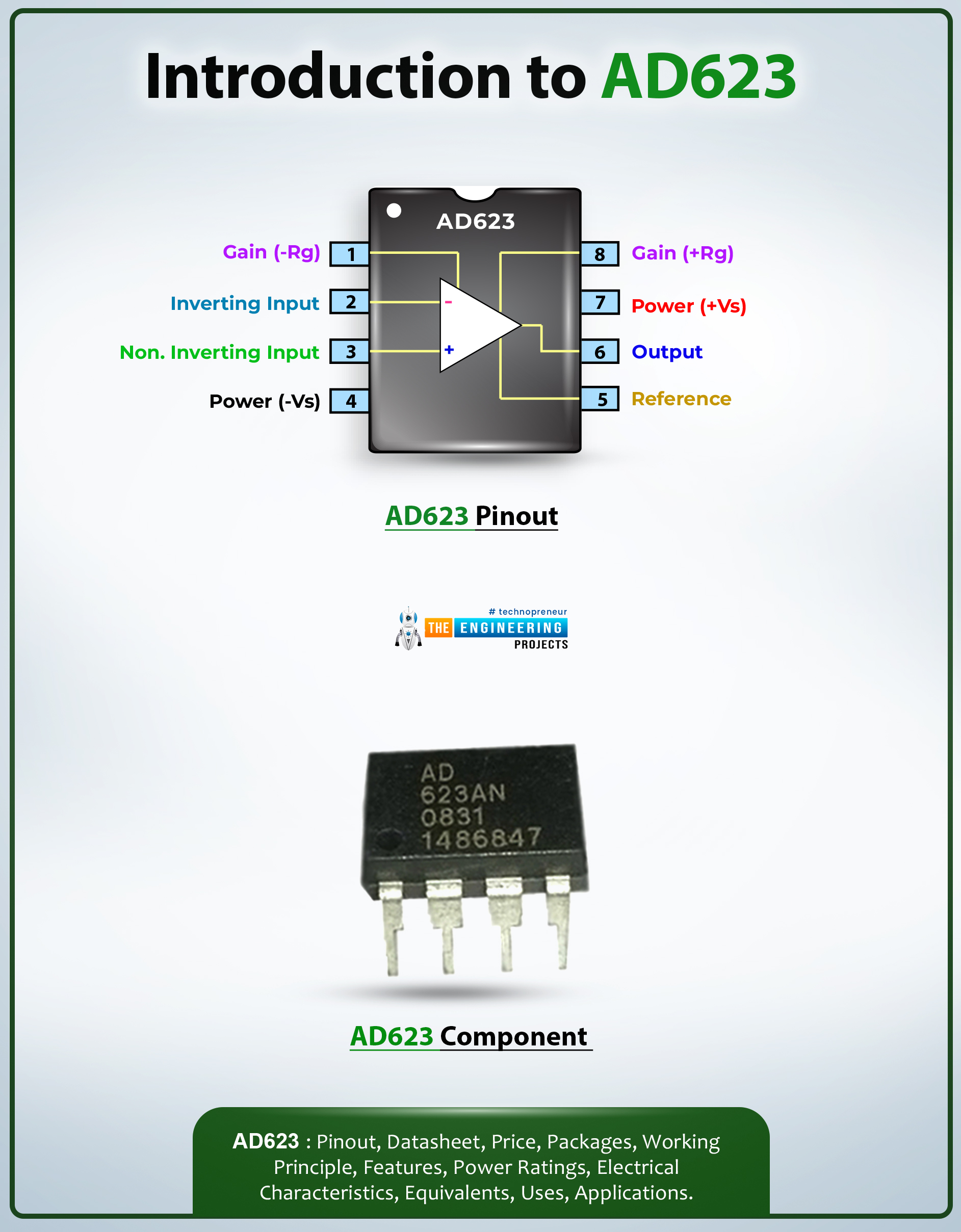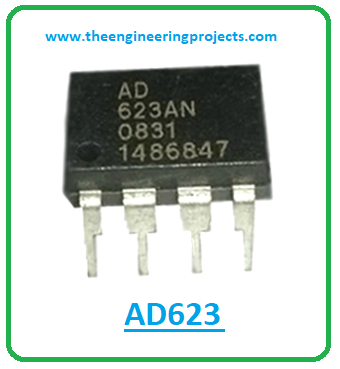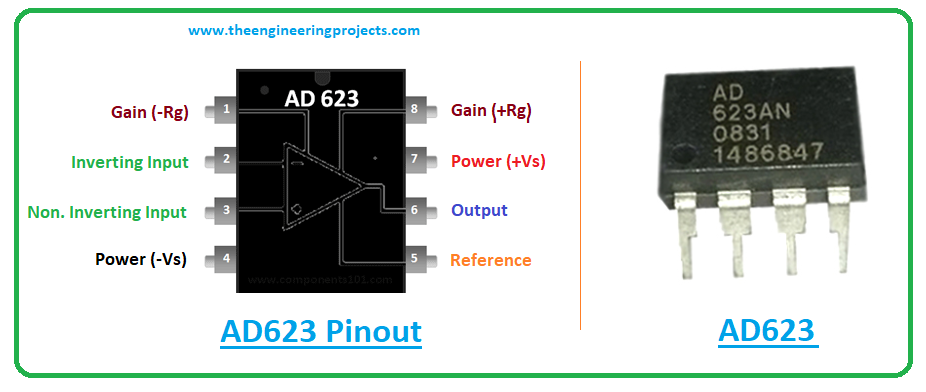
Hi Friends! I welcome you on board. Happy to see you around. In this post today, I’ll walk you through the Introduction to AD623.
The AD623 is an instrumentation amplifier integrated with a rail-to-rail feature. It is mainly used in battery-operated applications due to the low current of 500uA. It features a bandwidth of around 800 kHz which doesn’t require impedance matching since it incorporates buffer amplifiers that are attached to their input pins.
I suggest you buckle up as I’ll detail the complete Introduction to AD623 featuring datasheet, pinout, features, equivalents, and applications. Let’s jump right in.
Introduction to AD623
- The AD623 is an instrumentation amplifier that falls under the category of differential amplifiers that incorporate buffer amplifiers attached to their input pins, making it a suitable pick for test and measurement equipment.
- This device doesn’t require impedance matching which is a practice of making one impedance appear like another.
- Rail-to-Rail feature is used in this amplifier which allows the output voltage to reach its full potential of positive rail voltage or negative rail voltage.
- In a normal amplifier, this feature is not available as the output voltage of the amplifier is not equal to the supply voltage due to the presence of stage transistors which keep the amplifier from reaching its maximum positive or maximum negative voltage. Rail-to-Rail feature is used to overcome this problem.

- Moreover, this device comes with very high input impedance, high common-mode rejection ratio, low noise, low drift, and low offset.
- This kind of amplifier is mainly employed in the circuits where remarkable stability and accuracy is required.
- Instrumentation amplifier is a type of differential amplifiers where the internal amplifiers are arranged in a way – one amplifier is used to generate desired output with enough impedance and the other amplifier is used to buffer each input (+,-)
- Instrumentation amplifiers can be developed using standard individual amplifiers and precision resistors but also come in an integrated chip. This AD623 amplifier comes in an integrated chip that incorporates laser-trimmed resistors that provide a remarkable common-mode rejection ratio.
AD623 Datasheet
Before you incorporate this device into your electrical project, it’s wise to go through the datasheet of the component that features the main characteristics of the device. Click the link below to download the datasheet of AD623.AD623 Pinout
The following figure shows the pinout diagram of AD623.
| Pin Description of AD623 | ||||
|---|---|---|---|---|
| Pin No. | Pin Description | Pin Name | ||
| 1 | Inverting Gain Terminal connected to a resistor to set gain value | Gain (-Rg) | ||
| 2 | The Inverting input pin of the Op-Amp | Inverting Input (IN-) | ||
| 3 | The Non - Inverting Input Pin of Amplifier | Non- Inverting Input (IN-) | ||
| 4 | Negative supply terminal | Power (-Vs) | ||
| 5 | Output reference input. Normally connected to common | Reference | ||
| 6 | Amplifier output pin | Output | ||
| 7 | Positive supply terminal | Power (+Vs) | ||
| 8 | Non - Inverting Gain Terminal connected to resistor to set gain value | Gain (+Rg) | ||
AD623 Features
The following are the main features of AD623.- Gain Range = 1 to 1000
- Set gain with only one resistor
- Rail to Rail Instrumentation Amplifier
- Bandwidth = 800KHz
- Can operate on Single and Dual supply voltage
- Operating current Max. = 550uA
- Available Packages = 8-Pin PDIP, VSSOP and SOIC packages
AD623 Equivalents
The following are the alternatives to AD623.- JRC4558
- LM4871
- IC6283
- AD620
AD623 Applications
The following are the main applications of AD623.- Employed in calibration and test equipment
- Used in difference amplifiers
- Used in the control system process
- Employed in data Acquisition devices
- Incorporated in low Power Medical instrumentation
- Used in power-sensitive applications
That’s all for today. That was all about the Introduction to AD623. If you’re unsure or have any questions, you can pop your comments in the section below. I’d love to help you the best way I can. You’re most welcome to share your valuable feedback and suggestions around the content we share so we keep producing quality content customized to your exact needs and requirements. Thank you for reading the article.




